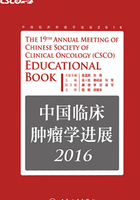
化疗在鼻咽癌综合治疗中价值的探讨及新思考
复旦大学附属肿瘤医院
史琪 胡超苏
1.概述
鼻咽癌发病在我国、东南亚及地中海等地区高发,具有显著地方性。随着诊断技术和多学科综合治疗的发展,鼻咽癌疗效大幅提高,早期患者5年生存率达90%以上。然而在局部进展期患者中,远处转移的控制仍不理想,寻求更有效治疗及治疗方案个体化势在必行。
2.化疗在鼻咽癌治疗中的地位
尽管放疗是鼻咽癌最为主要的治疗手段,化疗同样占据重要地位,特别对局部进展期患者,放化疗综合治疗已成为标准治疗模式。一项综合了10项随机临床研究2450例鼻咽癌患者的Meta分析显示:加用化疗后死亡风险比为0.82,5年生存率(OS)绝对增加4%;同期放化疗组OS提高最多,为20%,同时还提高局控和无瘤生存率,降低远处转移率;辅助化疗是否提高生存率未能定论;而新辅助虽能降低局部复发率和远处转移率,但未能提高总生存率[1]。MAC-NPC协作组荟萃分析4806例鼻咽癌患者发现:化疗显著提高局部区域控制、无进展生存、肿瘤特异生存并降低远处转移,并可转化为生存获益,加用化疗后死亡风险比为0.79,5年OS绝对增加6.3%,而这一获益来自同期加辅助化疗(HR 0.65,0.56~0.76)或同期放化疗(0.80,0.70~0.93),单纯辅助化疗或诱导化疗无显著生存获益[2]。可见,化疗已确立了在鼻咽癌综合治疗中的重要价值。而关于鼻咽癌综合治疗的模式,则成为了近年来广为关注的热点。
2.1 初发鼻咽癌的综合治疗
鼻咽癌综合治疗的模式,主要取决于放化疗联合的不同模式,可分为新辅助化疗、同期放化疗和辅助化疗。
2.1.1 同期放化疗
同期放化疗因能提高鼻咽癌患者生存而成为最早受到肯定的一种治疗模式,其疗效为多项临床研究和荟萃分析所证实。一项Ⅲ期临床研究入组284名Ⅲ、Ⅳ期无远处转移鼻咽癌患者,随机分为单纯放疗组和PF方案同期放化疗组。局部失败率、远处转移率均显著低于放疗组,而5年鼻咽无进展生存率89.3%、无进展生存率(PFS)71.6%、总生存率(OS)72.3%均显著高于后者,仅伴有Ⅲ、Ⅳ级急性毒副反应的轻度增高[3]。Chan等另一项Ⅲ期研究得到类似结论即同期组5年OS显著高于单纯放疗组;同期组较放疗组死亡风险比为0.71,在T3-4的亚组分析中,同期组死亡风险比进一步降至0.51[4]。一项比较同期放化疗(CCRT)和单纯放疗的荟萃分析纳入1608名患者,2、3、5年CCRT组死亡相对危险度分别为:0.63(95%CI:0.50~0.80),0.76(95%CI:0.61~0.93),0.74(95%CI:0.62~0.89)[5]。上述研究表明,同期放化疗较单纯放疗带来明显生存获益,尤其对局部进展期患者。因此,同期放化疗如今已成为局部进展期鼻咽癌的标准治疗模式。
2.1.2 新辅助化疗
新辅助化疗又称为诱导化疗。由于其应用时机在放射治疗前,故具有如下优点:①肿瘤血供好,利于化疗药物分布至肿瘤局部并发挥抗肿瘤作用;②及早杀灭可能存在的全身亚临床转移灶;③对于局部晚期患者,可较早地减轻肿瘤负荷,同时提高对之后放疗的敏感性;④此时患者一般状况较好,对化疗的耐受性高。Ouyang等发表一篇荟萃分析(共1418名患者)发现加用新辅助化疗后(NACT)死亡风险、远处转移风险显著降低(HR:0.82,P=0.03;RR 0.69,P=0.0002),局控无明显改善(P=0.49;RR:0.90)[6]。另一前瞻性研究5年随访结果提示CCRT组DFS65.1%、OS74.3%未优于NACT组(DFS51.5%、OS 71.7%);但亚组分析治疗结束2年内无复发者,CCRT组局部区域控制优于NACT组[7]。Xu等比较NACT和CCRT在局部进展期鼻咽癌疗效Ⅲ期临床研究初步结果提示:①5年随访结果未显示CCRT在OS、无复发生存率、无病生存率方面优于NACT;②CCRT提高了5年无远处转移生存率(MFS)(79.0%与86.9%,P=0.05,HR=0.59);③亚组分析显示MFS提高来自T3-4N0-1患者;④NACT在急性毒副反应方面略优于CCRT[8]。尽管有新辅助化疗可能降低远处转移风险,但由于并未带来明显生存获益,且较同期放化疗并未体现出明显优势,故其应用价值仍颇有争议。
对于局部晚期鼻咽癌,诱导加同期放化疗的模式能否带来更多获益也一直备受关注。Kong等一项前瞻性Ⅱ期研究,采用TPF方案新辅助化疗联合顺铂同期放化疗治疗局部晚期鼻咽癌。治疗耐受性和完成率可。Ⅲ期患者3年OS、PFS、LPFS、RPFS、DMFS分别为94.8%、78.2%、93.9%、91.2%、90.5%;Ⅳ期患者3年OS、PFS、LPFS、RPFS、DMFS分别为90.2%、85.1%、100.0%、93.0%、88.0% [9]。另一项对局部晚期鼻咽癌行TP方案诱导化疗联合顺铂同期放化疗的Ⅱ期研究样本量相对较小,但结果与Kong相近,3年OS、PFS为94.1%、72.7%,且治疗耐受性可[10]。Fountzilas等的随机Ⅱ期研究采用CEP诱导方案加顺铂同期化疗对比CCRT,结果两组PFS(64.5%与63.5%,P=0.708)、OS(66.6%与71.8%,P=0.652)均无显著差异[11]。最近Tan等发表的随机2/3期研究采用GCP方案(吉西他滨+卡铂+紫杉醇)诱导化疗及顺铂同期放化疗对比CCRT,结果GCP组耐受可但同期顺铂相对剂量强度低于CCRT组,OS(94.3%与92.3%,P=0.494)、DFS(74.9%与67.4%,P=0.362)、DMFS(83.8%与79.9%,P=0.547)较CCRT组均无提高,且3、4级血液学毒性略高于CCRT组[12]。2015年、2016年发表的三项荟萃分析综合比较了诱导加同期放化疗和其他治疗模式,结果均提示诱导化疗结合同期放化疗在远处转移控制方面优于同期放化疗(HR=0.6,0.37~0.98,RR=0.54,0.27~0.94,RR=0.54,0.24~1.04),其中一项提示诱导加同期的模式在无进展生存较同期放化疗显著提高(HR=0.66,0.49~0.9),但在总生存方面却始终未见到明显获益[13-15]。因此,尽管在NCCN指南中诱导化疗加同步放化疗被列为局部晚期鼻咽癌治疗的3类证据推荐,但这种综合治疗模式能否在不显著增加毒副反应的前提下带来更多获益尤其是生存获益,目前还需大规模Ⅲ期临床研究来加以证实。目前,已有国内和亚洲的数家机构在进行该方面Ⅲ期临床研究,其结果令人期待。
2.1.3 辅助化疗
同期放化疗加辅助化疗相比单纯放疗可带来生存获益。Al-Sarraf等研究表明Ⅲ、Ⅳ期鼻咽癌同期放化疗加辅助组3年OS(76.0%与46.0%,P<0.001)、PFS(69.0%与24.0%,P<0.001)均显著高于放疗组。[16]其他临床研究也提示类似结果[17,18]。然而生存获益可能更多的来自同期放化疗,辅助化疗价值并不确切。Chen等进行的多中心Ⅲ期临床研究首次证实对局部晚期鼻咽癌,同期放化疗基础上的辅助化疗未进一步提高疗效(2年FFS 86.0%与84.0%,P=0.13),且明显增加3-4级毒副反应[19]。2013年的一篇荟萃分析中,辅助化疗仅降低局部复发风险(P=0.03;RR 0.71),而总生存和远处转移风险无获益[6]。另一Meta分析总结8个随机临床研究、2144例患者,发现同期加辅助化疗未优于同期化疗(HR=0.86,0.6~1.16),尽管两者总生存均优于单纯放疗[20]。NPC 0501研究中比较诱导加同期化放疗、同期放化疗加辅助化疗两种方案用于局部晚期患者,初步结果提示PF(顺铂+5-Fu)诱导化疗替代PF辅助化疗未改善疗效,PX(顺铂+卡培他滨)诱导化疗替代PF辅助化疗可提高3年无病生存(81%与75%,HR0.54,0.36~0.80)和总生存(91%与83%,HR 0.42,0.25~0.70)[21],因此,同期放化疗联合辅助化疗的模式无论相比于单纯同期放化疗或是诱导化疗联合同期放化疗,均无明显优势。
2.1.4 调强放疗时代化疗模式的新思考
尽管在绝大多数既往研究表明,同步放化疗因其所能带来的生存获益而在局部晚期患者治疗中占据着重要地位。然而在调强放疗(IMRT)时代,同步放化疗的地位开始面临质疑和挑战。Sun等分析了868例接受调强放疗的鼻咽癌患者远期随访结果,发现局部晚期患者中接受CCRT组和未接受CCRT组在疾病特异性生存率(78.4%与79.1%,P=0.340)、无局部复发生存率(89.7%与89.1%,P=0.197)、无区域复发生存率(96.6%与96.0%,P=0.280)、无远处转移生存率(79.0%与80.8%,P=0.998)以及无进展生存方面(70.5%与68.8%,P=0.48)并无明显差异[22]。Yi等对比局部晚期患者接受IMRT同步整合加量和同步放化疗的预后,发现在局部控制(80.6%与90.8%,P=0.10)、远处转移(79.6%与86.0%,P=0.27)、总生存(71.7%与83.2%,P=0.201)方面无显著差异[23]。Zhang等回顾性分析了120例分别接受TP方案(多西他赛+顺铂)诱导化疗+IMRT和TP方案诱导化疗+奈达铂同期放化疗的局部晚期鼻咽癌,同样发现加用同期化疗组在局部区域控制(86%与92.3%,P=0.92)、远处转移控制(81.7%与79.6%,P=0.596)、总生存(83.3%与87.4%,P=0.516)无优势[24]。尽管目前尚缺乏足够的大规模前瞻性研究证据,但上述研究仍提示我们去思考和探索,IMRT时代同步放化疗的地位是否已被悄悄撼动?是否能为新的治疗模式的组合所替代?目前有数项正在进行的前瞻性随机临床研究在使用IMRT技术前提下,比较采用CCRT的治疗模式与其他不采用CCRT的综合治疗模式的疗效,结果令人期待。
2.1.5 化疗在早期鼻咽癌治疗的价值
早期鼻咽癌(T1-2,N0-1)是否有必要使用化疗的价值也是近年来关注的热点。Su等回顾性分析198例IMRT根治性放疗的T1-2bN0-1M0患者。尽管这批患者取得了理想疗效及可接受的毒副反应,但其中T2b患者5年局部复发风险相对偏高(LFS:94.2%与100%,P=0.252),T2bN1发生远处转移的比例占所有入组患者80%[25]。Chen等将236名福州92分期为Ⅱ期(其中31名按AJCC2010分期属N2)患者随机入组单纯二维放疗组和同期放化疗组,发现同期放化疗组在控制远处转移(94.8%与83.9%,P=0.007)、无进展生存(87.9%与77.8%,P=0.017)、总生存(94.5%与85.8%,P=0.007)方面均有显著获益。[26]Xu等分析T2N1M0(AJCC 2002)患者发现同期放化疗在5年局部区域控制方面显著优于单纯放疗(91.5%与77.3%,P=0.008),而无病生存、总生存较单纯放疗有优势但无统计学差异[27]。Kang等回顾性分析发现同期放化疗是Ⅱ期患者5年LRFS、PFS的独立预后因素[28]。尽管现有研究结果不尽一致,但从中可见对于早期(T2或N1)鼻咽癌患者,同期放化疗也可能带来获益。
2.2 复发转移鼻咽癌的化疗
复发转移鼻咽癌患者的化疗以姑息治疗为目的。常用一线化疗方案多为两药联合,包括:顺铂+5-Fu、卡铂+5-Fu、顺铂+卡培他滨、紫杉醇+卡铂、多西他赛+顺铂、吉西他滨+顺铂、吉西他滨+奥沙利铂等。Chen等的Ⅱ期临床研究将TPF方案用于复发转移者一线方案,取得78.9%缓解率,中位PFS、OS时间分别可达8.6、22.7个月[29]。也有报道洛铂联合多西他赛作为复发转移NPC一线化疗,总缓解率达61.5%,中位PFS时间达10.0个月[30]。
一线化疗失败后,挽救化疗药物的选择可包括:卡培他滨、伊立替康、吉西他滨、多西他赛(每周)、吉西他滨+长春瑞滨(GV)、紫杉醇+卡铂等。也可选择多药联合方案,但毒性反应、治疗相关性死亡发生率较高。一项以GV方案作为含铂类化疗失败挽救方案的研究示缓解率37.7%,中位PFS、OS时间为5.2、14.1个月[31]。Peng等的一项多中心Ⅱ期研究对以顺铂为基础一线化疗失败后行卡培他滨联合奈达铂化疗,缓解率达41.7%,中位PFS、OS时间为5.8、12.4个月[32]。此外Peng等的回顾研究发现S-1用于一线含铂类化疗失败的复发转移患者,中位PFS、OS时间分别达5.6、13.9个月[33]。
虽然复发转移鼻咽癌的化疗方案选择较多,但相关研究大多样本量较小,缺乏大规模前瞻性研究数据。且缺乏分别针对复发鼻咽癌患者和远处转移患者的研究数据。
3.结语
化疗在鼻咽癌综合治疗中具有重要地位。同期放化疗虽已成为目前的标准治疗模式,但在IMRT时代,其价值再次受到挑战。新辅助化疗可能降低远处转移风险,但对局部晚期患者,新辅助化疗联合同期放化疗是否能在不显著增加毒副反应的前提下带来更多生存获益尚待大规模前瞻性临床研究的证实。目前的研究数据提示加用辅助化疗未能带来更多生存获益。复发转移患者的姑息性化疗方案尽管选择多,但仍缺乏可靠的临床研究数据支持。
参考文献
1.Lanjendijk JA,Leemans CR,Buter J,et al.The Additional Value of Chemotherapy to Radiotherapy in Locally Advanced Nasopharyngeal Carcinoma:A Meta-Analysis of the Published Literature.J ClinOncol,2004;22(22):4604-4612.
2.Blanchard P,Lee A,Marquet S,et al.Chemotherapy and radiotherapy in nasopharyngeal carcinoma:An update of the MAC-NPC meta-analysis.Lancet Oncol,2015;Epub ahead of print.
3.Lin JC,Jan JS,Hsu CY,et al.Phase Ⅲ Study of Concurrent ChemoradiotherapyVersus Radiotherapy Alone for Advanced Nasopharyngeal Carcinoma:Positive Effect on Overall and Progression-Free Survival.JClinOncol,2003;21(4):631-637.
4.Chan AT,Leung SF,Ngan RK,et al.Overall survival after concurrent cisplatin-radiotherapy compared with radiotherapy alone in locoregionally advanced nasopharyngeal carcinoma.J Natl Cancer Inst.2005 Apr 6;97(7):536-539.
5.Zhang L,Zhao C,Ghimire B,et al.The role of concurrent chemoradiotherapy in the treatment of locoregionally advanced nasopharyngeal carcinoma among endemic population:a metaanalysis of the phase Ⅲ randomized trials.BMC Cancer,2010;10:558.
6.OuYangPY,XieC,MaoYP,et al.Significant efficacies of neoadjuvant chemotherapy and adjuvant chemotherapy for nasopharyngeal carcinoma by meta-analysis by published literature-based randomized,controlled trails.Ann Oncol 2013;24:2136-2146.
7.Wu SY,Wu YH,Yang MW,et al.Comparison of concurrent chemoradiotherapy versus neoadjuvant chemotherapy followed by radiation in patients with advanced nasopharyngeal carcinoma in endemic area:experience of 128 consecutive cases with 5 years follow-up.BMC Caner,2014;14:787-796.
8.Xu T,Hu C,Zhu G,et al.Preliminary results of a phase Ⅲrandomized study comparing chemotherapy neoadjuvantly or concurrently with radiotherapy for locoregionally advanced nasopharyngeal carcinoma.Med Oncol,2012;29(1):272-278.
9.Kong L,Hu C,Niu X,et al.Neoadjuvant chemotherapy followed by concurrent chemoradiation for locoregionally advanced nasopharyngeal carcinoma:interim results from 2 prospective phase 2 clinical trials.Cancer,2013;119(23):4111-4118.
10.Zhong YH,Dai J,Wang XY,et al.Phase Ⅱ trial of neoadjuvant docetaxel and cisplatin followed by intensity-modulated radiotherapy with concurrent cisplatin in locally advanced nasopharyngeal carcinoma.Cancer Chemother Pharmacol,2013;7(16):1577-1583.
11.Fountzilas G,Ciuleanu E,Bobos M,et al.Induction chemotherapy followed by concomitant radiotherapy and weekly cisplatin versus the sameconcomitant chemoradiotherapy in patients with nasopharyngeal carcinoma:a randomized phase Ⅱstudy conducted by the Hellenic Cooperative Oncology Group(HeCOG)with biomarker evaluation.Ann Oncol,2012;23(2):427-435.
12.Tan T,Lim WT,Fong KW,et al.Concurrent chemo-radiation with or without induction gemcitabine,Carboplatin,and Paclitaxel:a randomized,phase 2/3 trial in locally advanced nasopharyngeal carcinoma.Int J RadiotOncolBiol Phys,2015;91(5):952-960.
13.Song YQ,Wang WW,Tao GZ,et al.Survival benefit of induction chemotherapy in treatment for locally advanced nasopharyngeal carcinoma-A time-to-eventmeta-analysis.Oral Oncol,2015,51(8):764-769.
14.Chen YP,Guo R,Liu N,et al.Efficacy of the Additional Neoadjuvant Chemotherapy to Concurrent Chemoradiotherapy for Patients with Locoregionally Advanced Nasopharyngeal Carcinoma:aBayesian Network Meta-analysis of Randomized Controlled Trials.J Cancer,2015,6(9):883-892.
15.Yu H,Gu D,He X,et al.The role of induction and adjuvant chemotherapy in combination with concurrent chemoradiotherapy for nasopharyngeal cancer:a Bayesian networkmeta-analysis of published randomizedcontrolled trials.Onco Targets Ther,2016,9:159-170.
16.AL-SarrafM,LeBlanc M,Giri PG,et al.Chemoradiotherapy versus radiotherapy in patients with advanced nasopharyngeal cancer:phase Ⅲ randomized Intergroup study 0099.J Clin Oncol,1998;16(4):1310-1317.
17.Zhang L,Zhao C,Peng PJ,et al.Phase Ⅲ study comparing standard radiotherapy with or without weekly oxaliplatin in treatment of locoregionally advanced nasopharyngeal carcinoma:preliminary results.J Clin Oncol,2005;23(33):8461-8468.
18.Lee AW,Tung SY,Chan AT,et al.Preliminary results of a randomized study(NPC-9902 Trial)on therapeutic gain by concurrent chemotherapy and/or accelerated fractionation for locally advanced nasopharyngeal carcinoma.Int J RadiatOncolBiol Phys,2006;66(1):142-151.
19.Chen L,Hu CS,Chen XZ,et al.Concurrent chemoradiotherapy plus adjuvant chemotherapy versus concurrent chemoradiotherapy alone in patients with locoregionally advanced nasopharyngeal carcinoma:a phase 3 multicentrerandomised controlled trial.Lancet Oncol,2012;13(2):163-171.
20.Chen YP,Wang ZX,Chen L,et al.A Bayesian network metaanalysis comparing concurrent chemoradiotherapy followed by adjuvant chemotherapy,concurrent chemoradiotherapy alone and radiotherapy alone in patients with locoregionally advanced nasopharyngeal carcinoma.Ann Oncol,2015;26(1):205-211.
21.Lee AW,Ngan RK,Tung SY,et al.Preliminary results of trial NPC-0501 evaluating the therapeutic gain by changing from concurrent-adjuvant to induction-concurrent chemoradiotherapy,changing from fluorouracil to capecitabine,and changing from conventional to accelerated radiotherapy fractionation in patients with locoregionally advanced nasopharyngealcarcinoma.Cancer,2015;Epub 2014 Dec 19.
22.Sun X,Su S,Chen C,et al.Long-term outcomes of intensitymodulated radiotherapy for 868 patients with nasopharyngeal carcinoma:An analysis of survival and treatment toxicities.Radiother Oncol,2014,110(3):398-403.
23.Yi J,Huang X,Gao L,et al.Intensity-modulated radiotherapy with simultaneous integrated boost for locoregionallyadvanced nasopharyngeal carcinoma.Radiat Oncol,2014,9:56.
24.Zhang L,Shan GP,Li P,et al.The role of concurrent chemotherapy to intensity-modulated radiotherapy(IMRT)after neoadjuvant docetaxel and cisplatintreatment in locoregionally advanced nasopharyngeal carcinoma.Med Oncol,2015,32(3):41.
25.Su SF,Han F,Zhao C,et al.Long term outcomes of early stage nasopharyngeal carcinoma patients treated with intensity modulated radiotherapy alone.Int J RadiatOncolBiol Phys,2012;82(1):327-333.
26.Chen QY,Wen YF,Guo L,et al.Concurrent chemoradiotherapy and radiotherapy alone in stage Ⅱ nasopharyngeal carcinoma:phase Ⅲ randomized tria.J Natl Cancer Inst,2011;103(23):1760-1770.
27.Xu TT,Hu CS,Wang XS,et al.Role of chemoradiotherapy in intermediate prognosis nasopharyngeal carcinoma.Oral Oncol,2011;47(5):408-413.
28.Kang MK,Oh D,Cho KH,et al.Role of Chemotherapy in Stage Ⅱ Nasopharyngeal Carcinoma Treated with Curative Radiotherapy.Cancer Res Treat,2015,47(4):871-878.
29.Chen C,Wang FH,An X,et al.Triplet combination with paclitaxel,cisplatin and 5-FU is effective in metastatic and/or recurrent nasopharyngealcarcinoma.Cancer Chemother Pharmacol,2013;71(2):371-378.
30.Long GX,Lin JW,Liu DB,et al.Single-arm,multi-centre phase Ⅱ study of lobaplatin combined with docetaxel for recurrent and metastaticnasopharyngeal carcinoma patients.Oral Oncol,2014;50(8):717-720.
31.Chen C,Wang FH,Wang ZQ,et al.Salvage gemcitabinevinorelbine chemotherapy in patients with metastatic nasopharyngeal carcinoma pretreated with platinum-based chemotherapy.Oral Oncol,2012;48(11):1146-1151.
32.Peng PJ,Ou XQ,Chen ZB,et al.Multicenter phase Ⅱ study of capecitabine combined with nedaplatin for recurrent and metastatic nasopharyngealcarcinoma patients after failure of cisplatin-based chemotherapy.Cancer Chemother Pharmacol,2013;72(2):323-328.
33.Peng PJ,Cheng H,Ou XQ,et al.Safety and efficacy of S-1 chemotherapy in recurrent and metastatic nasopharyngeal carcinoma patients after failure of platinum-based chemotherapy:multi-institutional retrospective analysis.Drug Des Devel Ther,2014;14(8):1083-1087.